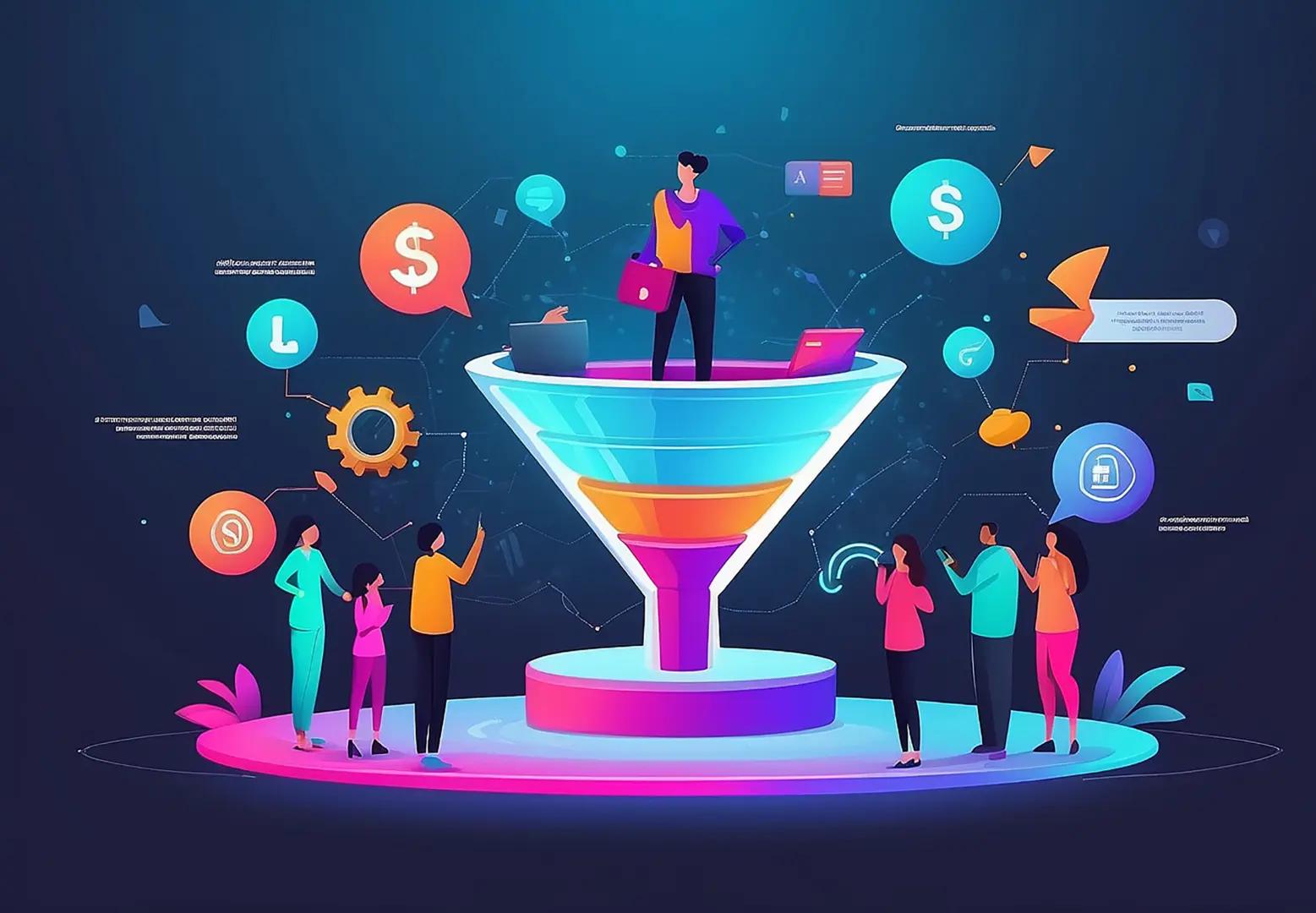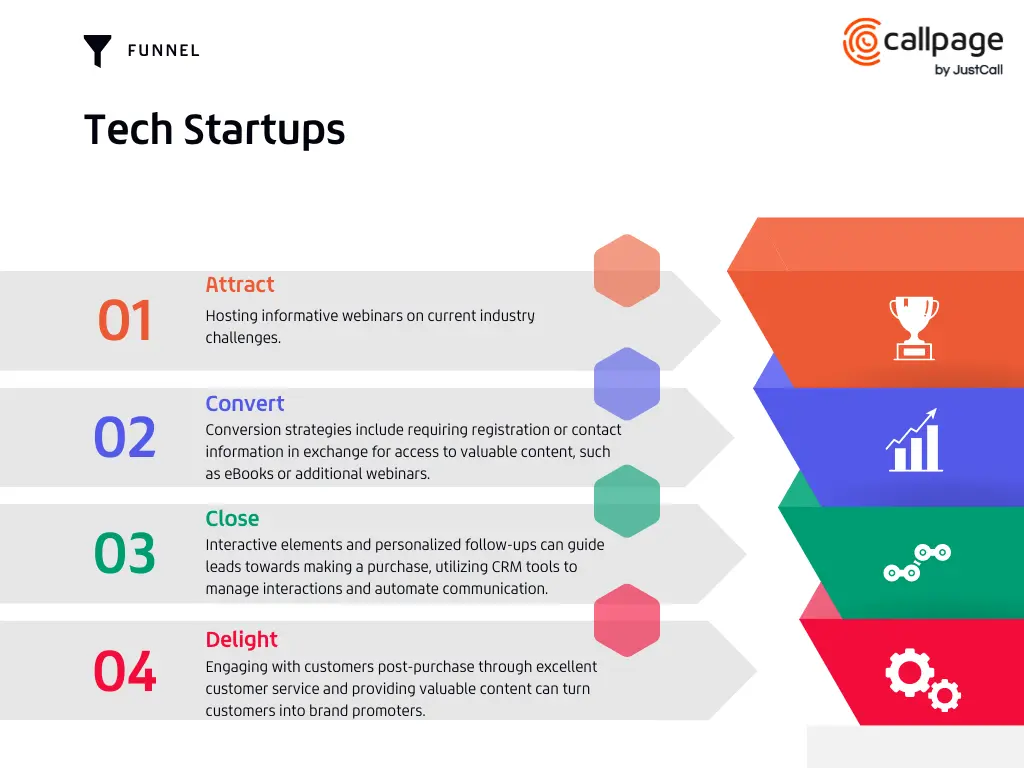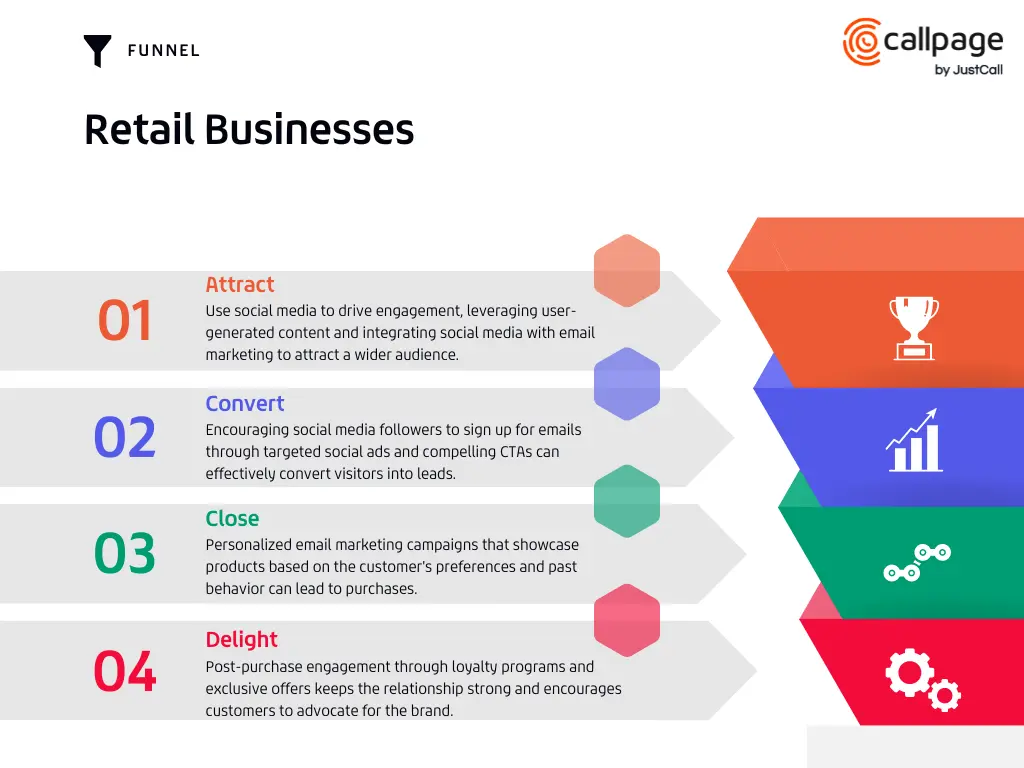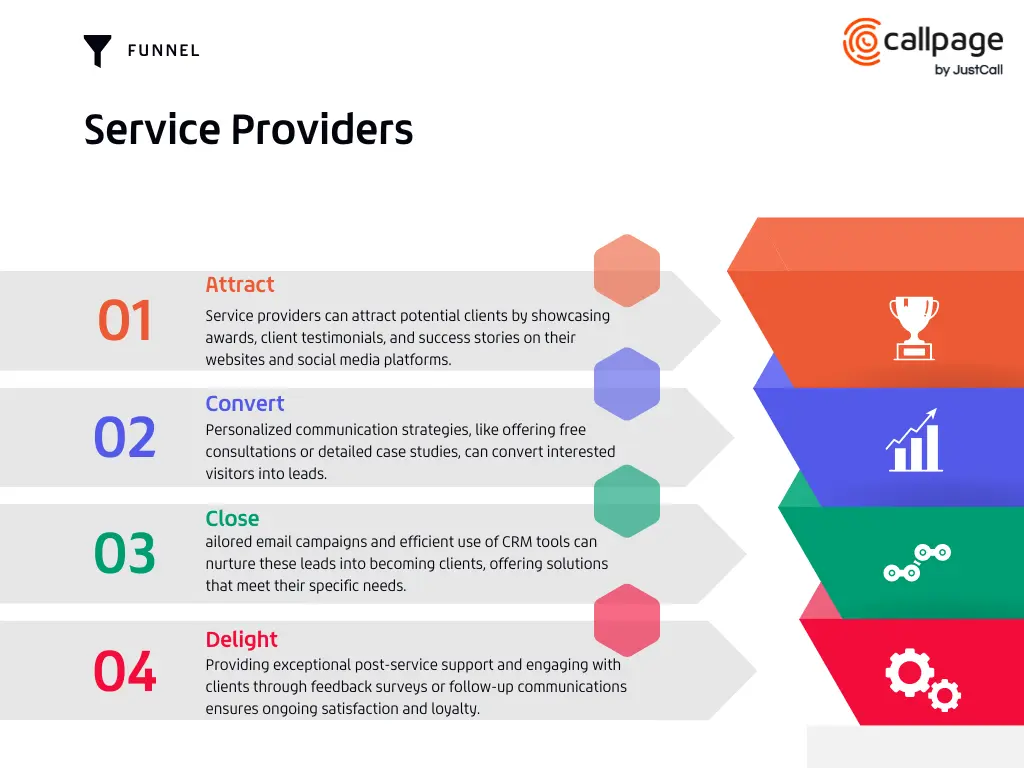
How to Create an Inbound Marketing Funnel? Examples for Different Industries
Feeling like your marketing efforts are getting lost in the noise? Inbound marketing offers a powerful method for attracting customers with valuable content instead of intrusive ads. Discover how this approach can turn website visitors into loyal fans, and learn industry-specific examples and practical tools to get you started. Read on and unlock the secrets to building genuine connections and lasting customer relationships through inbound marketing.
In a world where 82% of marketers are actively investing in content marketing, the power of inbound marketing funnels becomes undeniable (source). It's arguably better than normal outreach — it's about creating a magnetic pull with content that resonates deeply with people's needs and interests.
"The best marketing doesn't feel like marketing." Tom Fishburne once said. But how do you make your marketing “not feel like marketing” and still make it effective? Today, we’ll tell you all about the best inbound marketing strategies that will help you achieve this.
What is an Inbound Marketing Funnel?
An inbound marketing funnel (or inbound sales funnel) is a step-by-step plan used in digital marketing to attract, interest, and make customers happy online. It's a key part of digital marketing (especially social media marketing) today. The goal is to create helpful and positive experiences that benefit both people and your business.
In contrast, outbound marketing involves reaching out to potential customers directly, often through ads, emails, or calls, whether they've shown interest in your product or not.
By tailoring your content marketing to align with your target audience's interests, you naturally draw inbound traffic, which can then be converted, sealed, and pleased over time.
Here are the three main inbound marketing funnel stages (and a fourth optional one):
Attract (top of the funnel): This initial stage of the inbound marketing funnel turns strangers into website visitors. Using search engine optimization (SEO), high-quality content marketing, and active engagement on social media platforms, you draw potential customers to your site. The goal is to attract visitors with relevant content and social media posts that resonate with their needs and interests.
Convert (middle of the funnel): Visitors become leads at this stage of the inbound marketing funnel. Landing pages, forms, and CTAs are important here. They help you collect contact details in exchange for valuable offerings like eBooks, webinars, or free trials. This stage of the inbound marketing funnel is about converting leads by offering them something of value and gathering their information for further engagement.
Close (bottom of the funnel): Here, leads are nurtured into becoming customers. Tailored email marketing campaigns, efficient customer relationship management (CRM) systems, and personalized content play a significant role in guiding leads toward making a purchase. Marketing automation can help streamline this process, so that leads receive the right communication at the right time.
Delight: The final phase of the inbound marketing funnel is about turning customers into brand promoters. Excellent customer service, loyalty programs, and engaging, helpful content post-purchase make customers feel valued. These happy customers are then more likely to advocate for your brand. Engaging with customers through social media, email marketing, and other inbound marketing channels keeps the relationship strong and encourages them to share their positive experiences.
By adhering to these stages, the inbound marketing funnel not only supports business growth but also fosters a loyal community around your brand. The key to succeeding in this inbound marketing sales funnel is to focus on creating genuine connections and providing value every step of the way.
READ ALSO: Inbound vs. Outbound Leads — Key Differences and How to Leverage Both
Building Your Inbound Marketing Funnel
So now, let's get to the inbound marketing strategies that will guarantee that your inbound marketing funnel works. Here's our guide to building your own inbound marketing funnel effectively.
1. Attracting the Right Audience
SEO Insights for Visibility: You can easily improve and grow your online presence in search engines by weaving targeted keywords into your website’s content and tweaking its structure. This not only boosts your visibility in search engine results but also attracts those on the lookout for your solutions. This turns your site into a magnet for potential leads.
Content Marketing to Spark Engagement: In Seth Godin's words: "People do not buy goods and services. They buy relations, stories, and magic." What that means for you is that you should craft content that pulls in an audience with relatable content and a bit of magic. This magic can come in the form of insightful blog posts and informative whitepapers, or it can be in the form of captivating videos or posts on Instagram, TikTok, YouTube, or other platforms. Make sure to address the challenges and curiosities of your target demographic.
Social Media Strategies for a Wider Net: Platforms like LinkedIn, X, and Facebook are great for broadening your reach. There, you can foster direct connections with your audience. By sharing compelling content, joining conversations, and leveraging targeted advertisements, you enhance your visibility and draw in prospective leads. Just figure out which platforms your target audience uses. Is it TikTok, X, YouTube, or maybe Reddit?
2. Transforming Visitors into Leads
- Craft Inviting Landing Pages: Develop landing pages that are not just visually appealing but are also structured to convert. They should clearly articulate the benefits of your offer — coupled with striking, easily noticeable calls-to-action (CTAs).
- Effective Calls-to-Action: Shape your CTAs to be straightforward and motivating. Nudge visitors towards taking action. Be it downloading a guide, registering for a webinar, or booking a consultation, your CTA needs to stand out as both clear and appealing.
- Valuable Lead Magnets: Propose resources that are too good to pass up in exchange for contact details. No matter if it's a comprehensive guide, a free trial, or access to an exclusive webinar — make sure it delivers substantial value to your audience.
3. Advancing Leads Toward Sales
- Engaging Through Email Marketing: Use email marketing to maintain interest across the funnel. You can tailor your communication by segmenting your list. This allows you to send personalized messages that resonate with the diverse needs and preferences of your audience.
- Tailoring and Segmenting Your Approach: Customize your marketing initiatives and categorize your audience to guarantee that the most relevant messages reach the most appropriate individuals at the ideal time.
- Using CRM Tools for Lead Management: Make use of CRM tools to manage leads and interactions with customers efficiently. Tools that offer instant callbacks, like CallPage, can significantly improve the lead nurturing journey and boost conversion opportunities.
4. Delighting Customers for Retention and Referrals
- Post-Purchase Support and Engagement: Deliver exceptional support following a purchase to increase loyalty. This might include sending follow-up emails, conducting customer satisfaction surveys, and making sure that customer service is always within easy reach.
- Promoting Positive Feedback and Testimonials: Why not make use of glowing reviews and testimonials? They can help to foster trust among future customers. Motivate your happy customers to spread the word about their positive experiences on your website and across your social media profiles.
- Strategies for Upselling and Cross-Selling: By understanding your customers' ongoing needs, you can pinpoint chances for upselling and cross-selling. Suggest additional products or services that could enrich their experience, thereby boosting their satisfaction as well as your revenue.
By zeroing in on these strategic facets within your inbound marketing funnel, you're equipped to not just get website visitors and attract the right crowd but also to transform visitors into leads, leads into customers, and customers into enthusiastic endorsers. A well-thought-out inbound marketing strategy helps you stand out.
READ ALSO: How to Qualify Inbound Leads? A Step-by-Step Guide
Industry-Specific Examples
For Tech Startups

Tech startup PGi successfully used webinars to engage its audience. They hosted "Evolve or Die: Surviving the Changing Sales Landscape" to generate top-of-the-funnel awareness. This strategy led to over 100 registrants and 23 marketing-qualified leads. It's proof that webinars are effective in lead generation and conversion.
HubSpot, on the other hand, is a great example of the use of educational content, such as webinars and eBooks, to attract and nurture leads. They make it happen by requiring registration or contact info for access to valuable content.
Tech companies can adapt by sharing insights on industry challenges through these platforms. If you're part of a tech company, use interactive elements to engage your audience more deeply.
For Retail Businesses

Retailers like Old Navy and Anthropologie use social media and email marketing channels to drive engagement and sales. They utilize user-generated content and seamless social shopping experiences. Strategies include dedicating time to social customer service, curating user-generated content, and integrating social media with email marketing for a thorough approach.
Retail businesses can learn from Old Navy and Anthropologie by mixing social media and email marketing to enhance customer engagement. Creating a community around the brand and utilizing targeted social ads can effectively draw leads to custom landing pages. This makes it easier to get people to sign up for emails and turn those leads into customers.
For Service Providers

Lead generation in the service industry can benefit from focusing on trust, customer testimonials, awards, and personalized communication. Building trust through customer satisfaction and leveraging social proof is important for marketing services effectively.
Service providers can follow Mayple's lead by focusing on building trust through client testimonials and showcasing awards. Sharing client success stories and detailed case studies can help demonstrate value and expertise. It encourages potential and existing customers to engage with the service offered.
READ ALSO: Marketing for Insurance Companies — 17 Tips for Instant Results
Tools and Resources for Your Inbound Marketing Funnel
When it comes to developing an inbound marketing funnel tailored to the distinct demands of SMBs, you need appropriate tools that can help.
CallPage is a great tool to have because it helps build connections with new and existing clients. How? By providing instant callbacks to website visitors — a move that significantly boosts engagement with potential customers and elevates conversion rates. This way, you can easily convert all that website traffic your inbound strategy is generating into hot leads.
CallPage works well with CRM platforms like HubSpot and analytical tools like Google Analytics, which makes the task of lead management even easier for a marketer or sales rep. It also reveals important insights into how your marketing campaigns are performing.
READ ALSO: Marketing for Accountants — 17 Strategies for 2024
Build an Effective Inbound Marketing Funnel
What makes a successful inbound marketing methodology or strategy so successful is not a secret. The answer lies in its ability to attract, engage, and delight customers consistently. Through the strategic use of tools and approaches, including CallPage, sales, and marketing teams and professionals can enhance their funnels to align more closely with the expectations of modern, digital-first consumers.
If you would like to elevate your inbound marketing, trying tools like CallPage could significantly improve your lead generation and help you build relationships and retain customers. And if you take just one inbound marketing strategy away from this blog, let it be this: Create content that your clients will genuinely enjoy and find valuable.
Don't forget: the best marketing doesn't feel like marketing...
Check out other posts
Start generating leads today!
Start a 14-day free trial now,
set up the widget on your site, and see how many more leads you can capture with CallPage
- No credit card required
- 10 minutes set up
- 14 days fully-features free trial